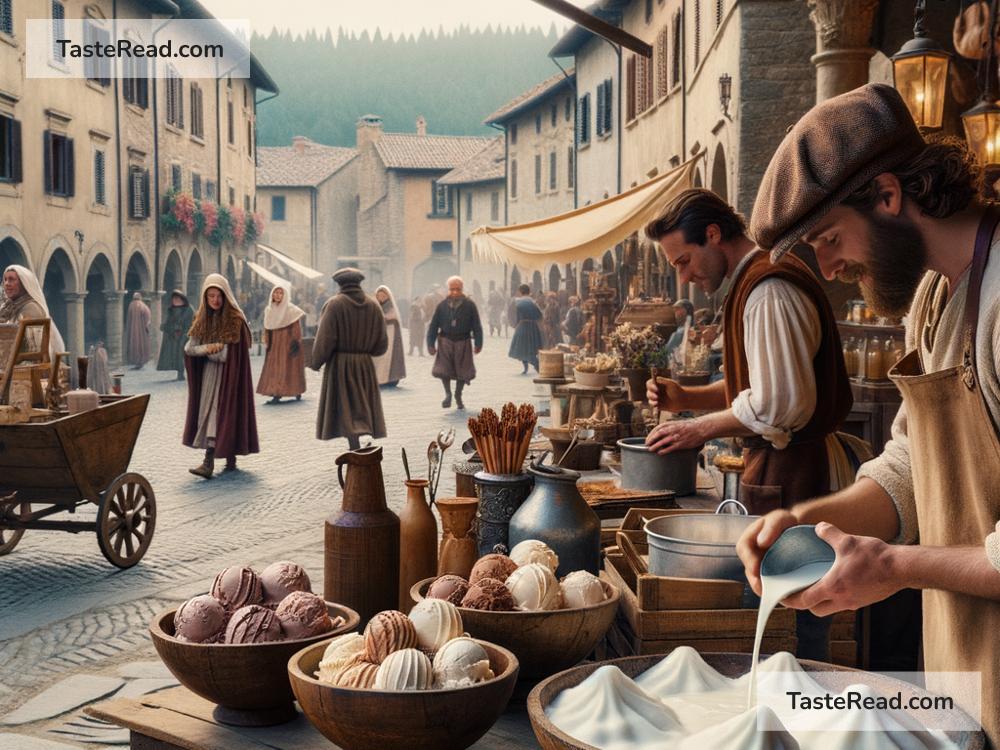Origins of the First Gelato in Folklore: A Sweet Journey
Gelato, the creamy and flavorful frozen treat loved worldwide, has a long and fascinating story. Often compared to ice cream, gelato’s origins are deeply rooted in history and folklore, blending reality and imagination. Where did this delightful dessert come from? Let’s take a journey through its beginnings, exploring myths, legends, and historical tidbits to uncover how gelato may have come to be.
Ice and Sweetness in Ancient Times
The concept of gelato’s early origins begins with ancient civilizations that used ice or snow to create primitive frozen desserts. Thousands of years ago, people in China discovered how to mix snow with fruit juices, honey, and wine to create refreshing treats. This may not have been the gelato we know today, but it was an important step in learning how to use natural ingredients and cold temperatures to make something sweet.
Similar methods were used by the Persians around 500 BCE. They developed a dish called “sharbat,” made with ice and flavored syrups like rose water. In parts of the Middle East and India, people figured out how to store ice in underground chambers called “yakhchals,” making it easier to enjoy icy desserts even in hot climates. These innovative ideas influenced cultures far and wide, paving the way for gelato’s evolution.
Ancient Italian Legends of Gelato
Italy, the modern home of gelato, has its own legends about how this treat began. One of the most popular stories is associated with the Roman Empire. It is said that Roman emperors like Nero loved icy desserts. He would send servants to the mountains to gather fresh snow, which was then mixed with honey, fruits, and other natural flavors. Though this wasn’t gelato as we know it today, it shows how ancient Italians appreciated the idea of combining cold and sweetness.
Another Italian legend centers on Sicily, a southern region particularly famous for its gelato tradition. Folklore claims that around the 9th century, during the Arab rule of the island, locals learned new techniques for making frozen desserts. The Arab rulers brought with them knowledge of mixing ice with sugar and fruit juices, the very foundation of gelato. This blend of cultural ideas shaped Sicily into an early hub for frozen treats.
Renaissance Italy: An Important Turning Point
The Renaissance period played a key role in giving gelato its modern form. A famous historical figure often linked to gelato’s creation is Bernardo Buontalenti, a talented Florentine artist and architect from the late 16th century. According to legend, Buontalenti surprised the court of the powerful Medici family with a frozen dessert that combined milk, sugar, and natural fruit flavors for the first time.
Although this story has a mix of truth and folklore, Buontalenti is often celebrated as one of gelato’s inventors, and his name has become synonymous with a delicious type of gelato called “Crema Fiorentina.” With the Renaissance fueling creativity in both art and cuisine, Italy became the center of gelato innovation.
Another important moment in gelato’s history came when Francesco Procopio dei Coltelli, a Sicilian chef, brought frozen desserts to France around the late 1600s. He opened “Café Procope,” one of Europe’s first coffee houses in Paris, which served gelato-like treats to delighted customers. Thanks to Procopio, gelato started spreading beyond Italy, earning popularity among European nobility and the wealthy classes.
Gelato vs. Ice Cream: A Folkloric Debate
While people in modern times compare gelato to ice cream, the two desserts are quite different. Gelato is generally smoother and denser due to having less air whipped into it during the freezing process. It’s made with more milk than cream and served at a slightly warmer temperature, which enhances its flavor. Ice cream, on the other hand, focuses on heavier cream and colder servings.
One whimsical tale often told in Italian families suggests how gelato could be seen as the “fancier cousin” of ice cream. In this story, ice cream is described as a clumsy invention, born out of accidentally spilling cream and sugar into icy mixtures. Gelato, however, is said to have been carefully crafted by inventive chefs with a love for precision and artisanship. Though the story is purely imaginative, it highlights the pride Italians take in their treasured dessert.
A Cultural Treasure Loved by All
Gelato grew from being a luxury item enjoyed by aristocrats to something that could be shared with everyone. As technology advanced in the 19th and 20th centuries, making gelato became easier. Italians spread their craft around the globe, especially after immigrating to new countries like the United States. Today, gelato shops can be found in cities and towns everywhere, serving flavors that range from classic pistachio and chocolate to more adventurous options like basil or lavender.
Though the exact origins of gelato are wrapped in mystery and legend, one thing is certain: it has brought joy to countless people over centuries. Combining the old traditions of frozen desserts with Italian creativity and artistry, gelato has earned its place as one of the world’s most beloved treats.
So the next time you savor a scoop of creamy gelato, remember that you’re enjoying a dessert with deep roots in history and folklore—a story that began with snow and sweetness, shaped by many cultures over time. It’s not just a treat; it’s a tasty piece of history!


